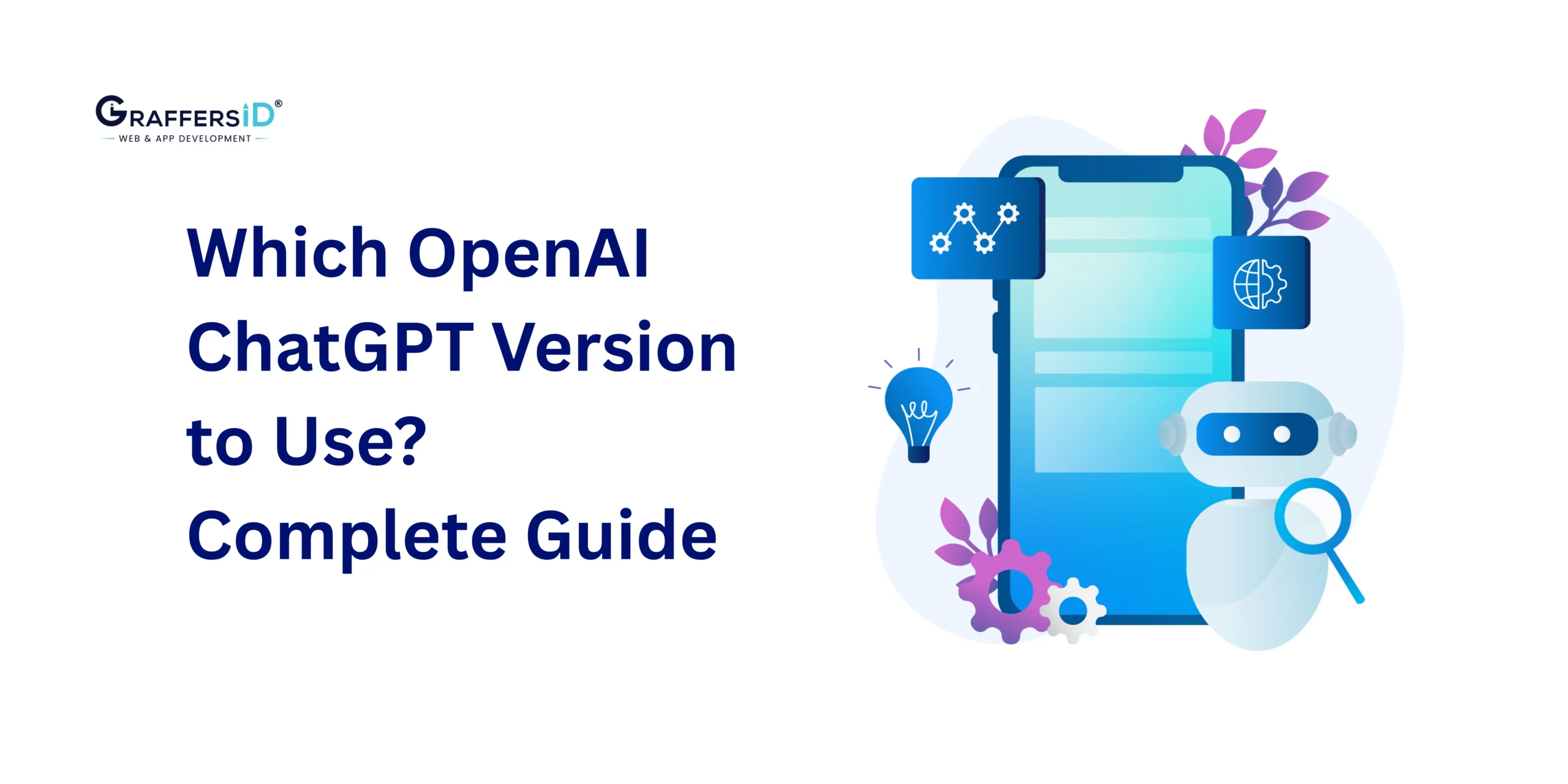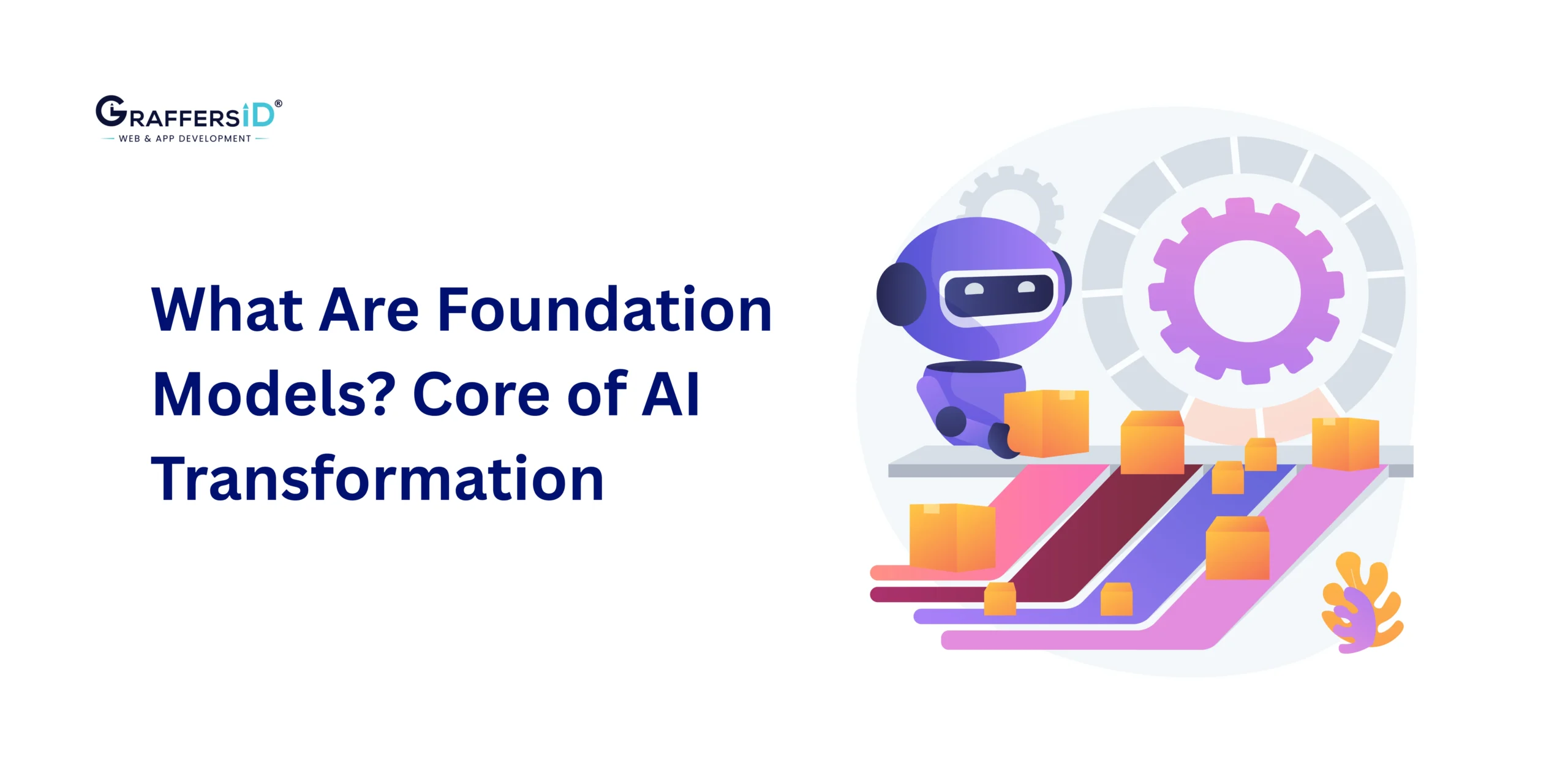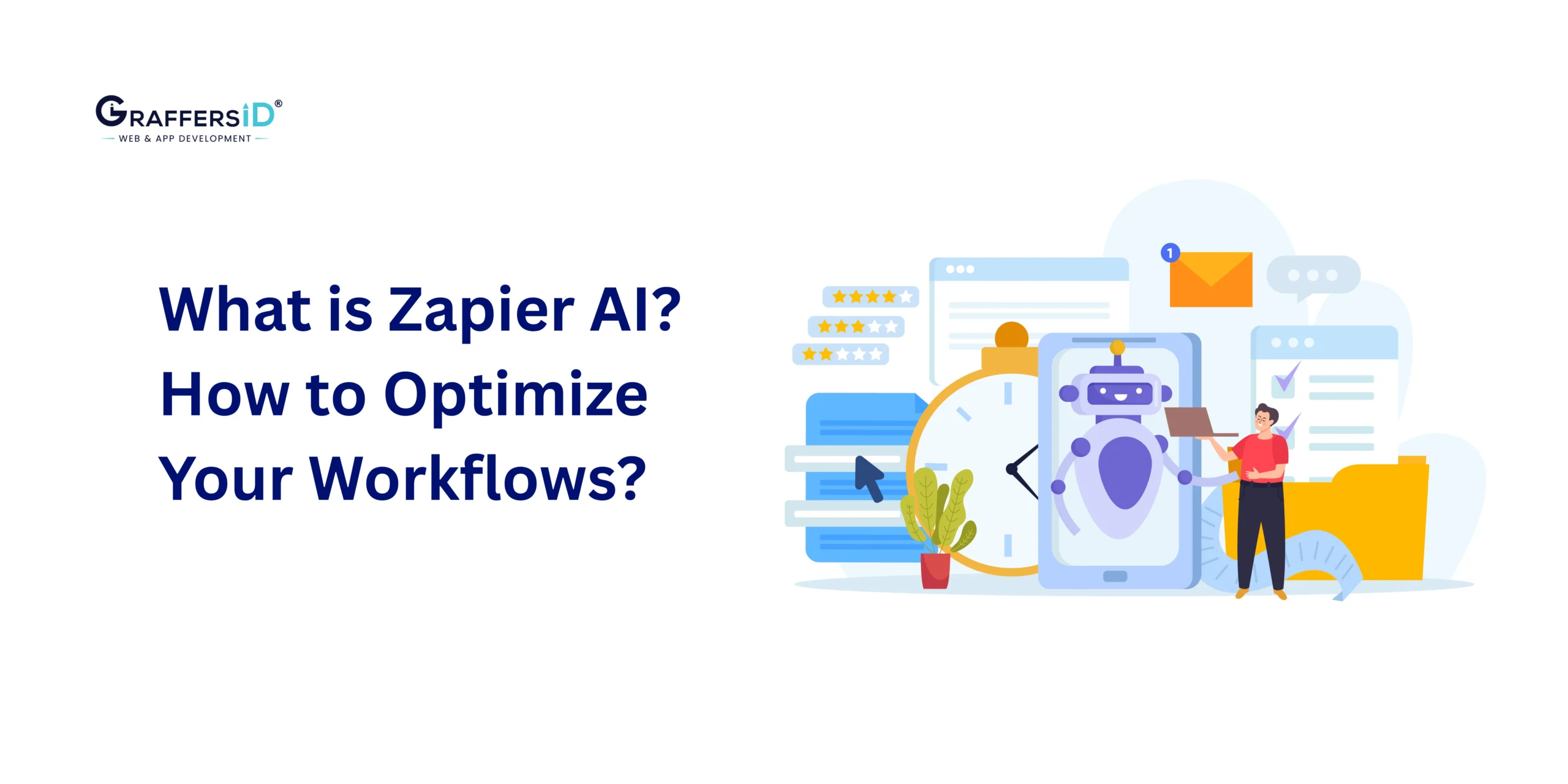Quick Answer:
As of August 2025, the latest ChatGPT model is GPT-5. It offers a 272K context window, agentic AI abilities, and multimodal reasoning (text, images, audio, video), making it the best choice for enterprises, CTOs, and automation-heavy workflows. If you want the most cost-effective option, GPT-4 Turbo remains the most practical model for startups and professionals. For casual learning, GPT-3.5 (Free) is still available.
Introduction
Choosing the right ChatGPT version in 2026 can feel confusing. With so many updates, GPT-3.5, GPT-4, GPT-4 Turbo, GPT-4o, GPT-4.5, and now GPT-5, it’s hard to know which model is the smartest, fastest, or most cost-effective for your needs.
If you’re a developer building apps, a startup founder exploring AI integration, or a business leader looking for automation, the version you use can directly impact productivity, costs, and results.
In this updated guide, we’ll explain:
-
The different models of ChatGPT versions (from GPT-1 to the latest GPT-5).
-
Which version is best for coding, content, business, or research?
-
Practical use cases in software development, product management, UI/UX design, marketing, and more.
-
How to integrate ChatGPT into your workflows or applications for maximum value?
By the end of this blog, you’ll know exactly which ChatGPT model to choose in 2026 and how to use it effectively for your work.
What is ChatGPT?

ChatGPT is OpenAI’s AI-powered assistant built on the Generative Pre-trained Transformer (GPT) architecture. Since 2018, GPT models have grown from simple text generators to multimodal reasoning systems.
In 2026, ChatGPT now supports:
- Text, image, audio, and video understanding
- Memory 2.0 for long-term personalization
- Agentic AI behaviors (reasoning + task execution)
- Tool integrations like Browser+, Python (data analysis), and DALL·E
This makes ChatGPT not just a chatbot but a business-grade AI assistant for developers, marketers, designers, and enterprises.
Evolution of GPT (2018 – 2026)
The evolution of GPT (Generative Pre-trained Transformer) shows how quickly AI has advanced from basic text prediction to today’s multimodal, reasoning-driven assistants. Each version was built on the last, improving scale, accuracy, context handling, and real-world usability. Here is a list of all the major versions by date:
Source: OpenAI
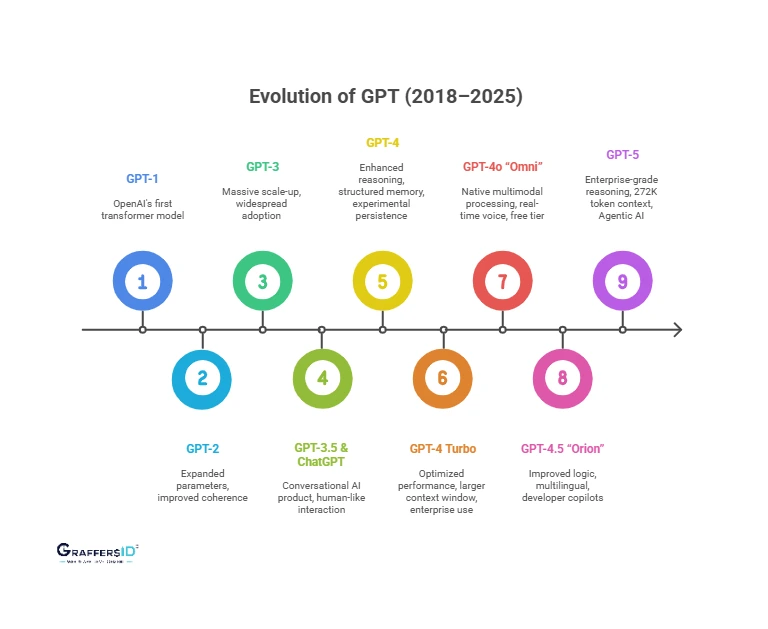
1. GPT-1 (2018): The Foundation
GPT-1 was OpenAI’s first attempt at developing a generative pre-trained transformer model. This initial model had 117 million parameters and served as a proof of concept. It demonstrated that a transformer-based model trained on large datasets could understand and generate coherent language, laying the groundwork for future versions.
2. GPT-2 (2019)
GPT-2 was expanded to 1.5 billion parameters, highly improving coherence in long-form text generation. However, OpenAI first delayed the full release due to concerns about possible misuse. It was later released publicly, and its ability to generate coherent, multi-paragraph content amazed developers.
3. GPT-3 (2020)
A massive leap with 175 billion parameters, GPT-3 represented a massive scale-up, with drastically improved performance in understanding context, answering questions, writing code, and more. It became the foundation for many AI applications and gained widespread adoption across writing, customer support, education, and more.
4. GPT-3.5 & ChatGPT (2022)
This marked the introduction of a conversational AI product based on GPT-3.5. With the launch of ChatGPT, OpenAI introduced a user-facing product focused on human-like interaction. This model could remember the flow of conversations, answer follow-up questions intelligently, and mimic a human conversational tone, making it user-friendly for both casual and professional uses.
5. GPT-4 (2023)
GPT-4 added better reasoning, deeper understanding, and a more structured memory structure. It was significantly more trustworthy for complex tasks like code debugging, technical writing, legal and financial analysis, and higher-order decision-making tasks. Introduced early support for persistent memory in experimental form.
6. GPT-4 Turbo (2023)
An optimized version of GPT-4, this model offered faster performance, reduced costs, and a larger context window, allowing users to input or analyze much larger amounts of data at one time. It is widely used in enterprise-level workloads, perfect for handling large codebases, documents, and real-time data processing.
7. GPT-4o “Omni” (2024)
‘o’ for Omni. This model is capable of processing and responding to text, audio, and image inputs natively. Some of its main features include real-time voice interaction, vision understanding (diagrams, charts, photos), human-like tone, and conversational flow. Comparable to GPT-4 Turbo, this is faster, cheaper, and natively multimodal. It is available for free with limited usage and under the ChatGPT Plus plan for extended features.
8. GPT-4.5 “Orion” (2025)
A refinement over GPT-4o with improved logic, efficiency, and multilingual capabilities. Combination of unsupervised pre-training, supervised fine-tuning, and RLHF (Reinforcement Learning from Human Feedback). Supports more than 15 languages. Its key use cases include complex data analysis in developer tools and as AI copilots for software teams. This model reduced hallucinations and better factual consistency across long sessions.
9. GPT-5 (2025)
GPT-5 is the latest evolution of OpenAI’s language model, designed for enterprise-grade reasoning, automation, and multimodal interaction. It supports an extended 272K token context window, allowing analysis of entire books, codebases, or datasets in one session.
The model supports Agentic AI behavior, custom personas, and automation workflows, making it a game-changer for CTOs and businesses. Designed for higher accuracy, fewer hallucinations, and real-world deployment, GPT-5 sets the new benchmark for AI assistants.
Each version of GPT has built on the last, improving logic, speed, cost-efficiency, memory, and usability. GPT has evolved from a research experiment into a mission-critical AI assistant, now capable of handling complex reasoning, multimodal inputs, and enterprise automation.
Read More: ChatGPT vs. DeepSeek vs. Google Gemini: Which AI Model is Best for Developers?
Comparison of ChatGPT Versions (2026)
| Version | Year | Context Window | Multimodal | Best For |
|---|---|---|---|---|
| GPT-3.5 | 2022 | 8K–32K | No | Free, casual learning |
| GPT-4 | 2023 | 8K–128K | Yes | Research, writing, coding |
| GPT-4 Turbo | 2023 | 128K | Yes | Cost-effective productivity |
| GPT-4.5 Orion | 2025 | 200K+ | Yes | Multilingual, developer tools |
| GPT-5 | 2025 | 272K | Yes | Enterprise automation & agentic AI |
Which is the Latest ChatGPT Version in 2026?
The latest version is GPT-5 (released August 7, 2025). It outperforms previous models with:
- 272K token context (analyzes books, codebases, datasets in one session)
- Agentic AI (plans + executes workflows)
- Memory 2.0 (personalized recall across sessions)
- Full multimodality (text, images, audio, video)
“GPT-5 not only outperforms benchmarks but is more useful for real-world enterprise tasks like automation, analysis, and reasoning.
– OpenAI
Features of GPT-5 (2026)

- 272K Context Window: Allows the model to process and remember information equivalent to nearly 700+ pages of text in a single conversation. This means businesses can feed entire codebases, research papers, or project documentation without breaking them into parts.
- Agentic AI Abilities: Can reason, plan, and execute tasks across tools and apps, making it useful for automation, research, and enterprise workflows.
- Integrated Tools:
- Python Tool (Code Interpreter/Advanced Data Analysis): Faster, smarter data analysis with predictive modeling.
- DALL·E: Convert text prompts into images, edit existing visuals, design interfaces, and visualize branding ideas.
- Browser+: Access real-time data with fact-checking to enhance market analysis, trends, documentation, and recent articles.
- Memory 2.0: Stores user information, past interactions, and preferences, for long-term personalization with better privacy controls
- Advanced Multimodal Support: Understands and generates across text, images, audio, and video for next-level creativity and business use cases.
- File Intelligence: Handles large-scale file uploads (PDFs, spreadsheets, slide decks) with structured insights and summaries in seconds.
Practical Uses of ChatGPT in 2026
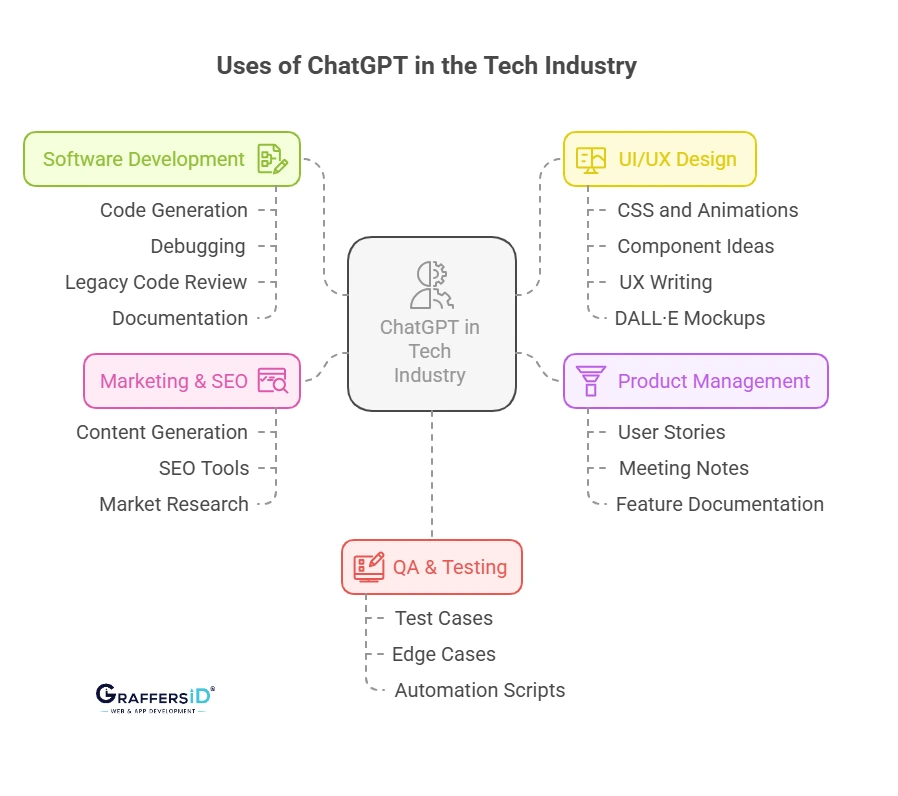
1. Software Development
- Code Generation: Generate modules, APIs, or entire components in React, Node, etc.
- Debugging: Detect logical errors and suggest optimized fixes.
- Legacy Code Review: Understand older codebases with natural language explanations.
- Documentation: Draft inline comments, README files, and developer notes are automatically generated.
2. Product Management
- User Stories: Translate verbal feature descriptions into Jira-ready stories.
- Meeting Notes: Turn raw transcripts into summaries and action points.
- Feature Documentation: Draft use-case descriptions, acceptance criteria, and system behavior flows.
3. UI/UX Design
- CSS and Animations: Get full stylesheets or animation suggestions for specific design effects.
- Component Ideas: Prompt ChatGPT for layout inspiration or color palette suggestions.
- UX Writing: Generate clean and persuasive microcopy for CTAs, buttons, and onboarding screens.
- DALL·E Mockups: Turn text-based product ideas into visual prototypes instantly.
5. Marketing & SEO
- Content Generation: Write high-quality blog posts, product descriptions, and ad content.
- SEO Tools: Generate meta tags, keyword-rich headings, and strategic keyword suggestions.
- Market Research: Use real-time browsing to compare competitor content or extract market trends.
6. QA & Testing
- Test Cases: Quickly draft structured test scenarios for frontend and backend systems.
- Edge Cases: Simulate rare, real-world conditions that might break an app.
- Automation Scripts: Generate browser automation with Selenium, Cypress, or Puppeteer.
Read More: Agentic AI vs. Generative AI: Key Differences CTOs Must Know in 2026
Which ChatGPT Version Should You Choose in 2026?
Choosing the right ChatGPT version in 2026 depends on your needs:
-
Casual users & learners: GPT-3.5 (Free) is good for quick answers, brainstorming, and everyday queries.
-
Professionals & startups: GPT-4 Turbo offers stronger reasoning, file uploads, and multimodal features at an affordable $20/month.
-
Enterprises & advanced AI users: GPT-5 delivers the biggest upgrade with a 272K context window, deeper reasoning, and better memory, making it ideal for research, coding, and business automation.
In short: if you want basic chat, go free; for productivity, choose GPT-4 Turbo; for enterprise-grade AI, GPT-5 is the clear winner.
How to Use ChatGPT in Tech Workflows? 2026 Guide
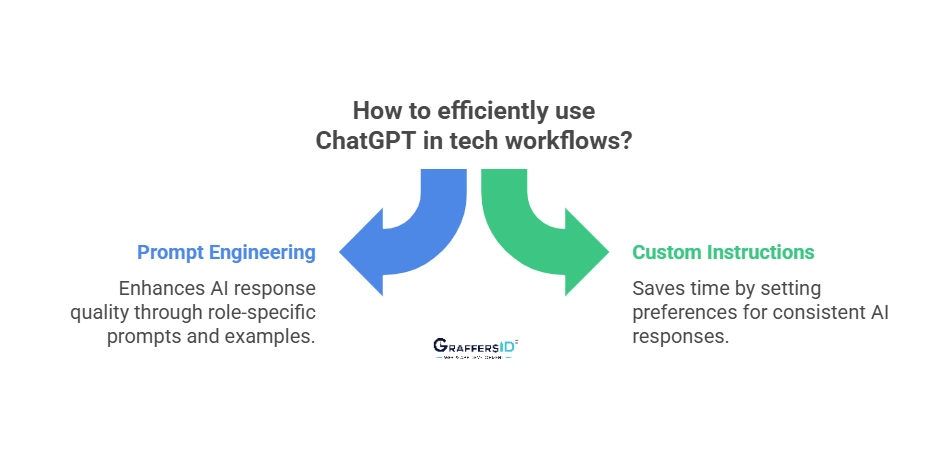
AI assistants like ChatGPT have become a core productivity tool for developers, tech leaders, and enterprises. To maximize value, you need more than just good prompts; you need structured workflows, integration strategies, and optimization tactics.
Prompt Engineering Best Practices (2026)
- Be Role-Specific: Define the AI’s perspective. Example: “Act like a senior cloud architect”.
- Break Down Tasks: For complex queries, request step-by-step reasoning instead of one big answer.
- Provide Examples: Include sample formats or code snippets so ChatGPT mimics your style.
- Iterate Quickly: Guide responses in real time (e.g., “make this concise” or “rewrite in plain English”).
- Use Context Memory: With persistent memory features in GPT-5, your AI can now recall preferences across sessions.
Using Custom Instructions
Custom Instructions in ChatGPT let you set preferences once and save time. In 2026, this feature has evolved to support team-wide presets, making it ideal for businesses. Here’s how to do it:
- Open Settings > Custom Instructions.
- Add details such as your job title, writing style, or your preferences.
- Future responses from ChatGPT will be automatically customized to your context, taking less time and effort.
How to Integrate GPT into Your Web Apps or Software?
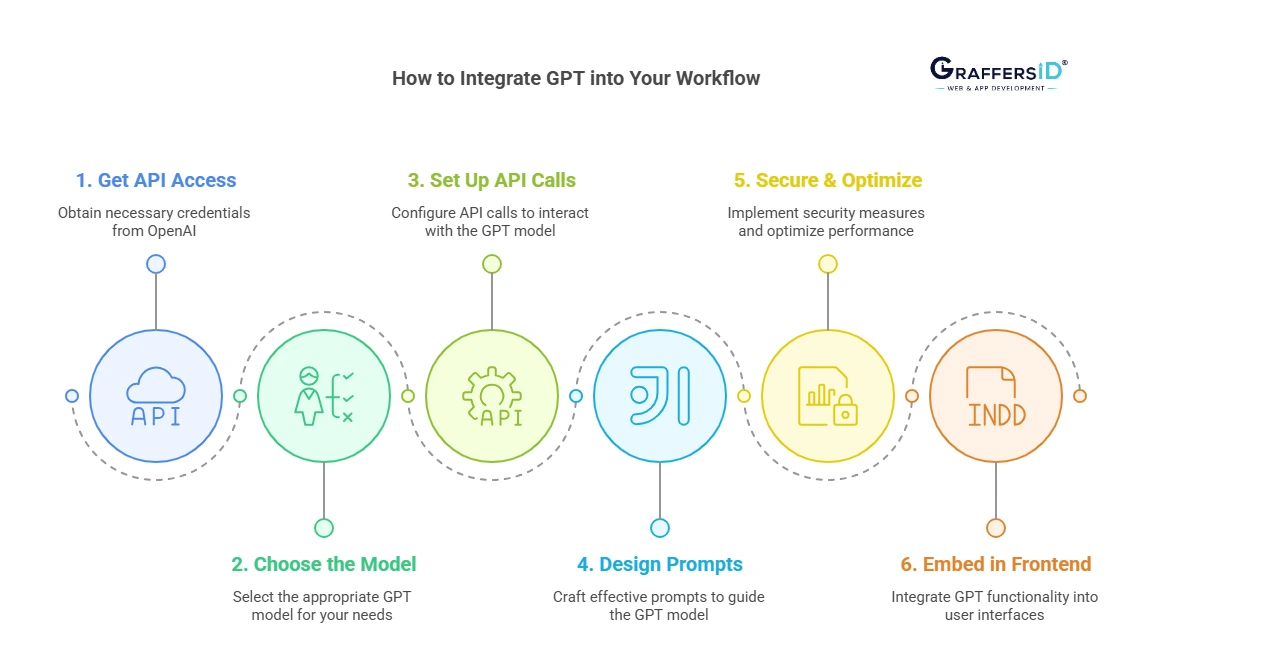
Beyond chat, GPT can be embedded directly into apps, SaaS platforms, CRMs, and developer tools. Here’s how enterprises are integrating it in 2026:
Step-by-Step Guide to Integrate GPT into Your Workflows
1. Get API Access from OpenAI
Get your API key by registering on the OpenAI Platform. You’ll be able to choose between models, depending on your use case and budget.
2. Choose the Right Model
- GPT-4.1: Best for cost-effective tasks like auto-replies, summaries, and content support.
- GPT-5: Optimized for reasoning-heavy workflows like coding copilots, legal analysis, and enterprise automation.
3. Set Up API Calls
Use the official OpenAI SDKs (Python, Node.js, or REST). Most modern frameworks have direct GPT plugins.
4. Design Smart Prompts
Context-aware prompts work best. Example:
- For Devs: “You’re a React expert. Debug this error: [input]”
- For Product Teams: “Draft a user story for this feature: [input]”
5. Secure & Optimize
- Set rate limits to control costs.
- Use embeddings & vector DBs (like Pinecone, Weaviate, or Chroma) for faster recall.
- Cache common queries to reduce API calls.
6. Embed in Frontend or Workflows
- Add GPT responses in chat-style sidebars.
- Provide type-ahead suggestions in forms.
- Auto-generate documentation, FAQs, or test cases within dashboards.
AI Tools That Help
- LangChain: Build AI-powered agents that connect with APIs, databases, and files.
- Vercel AI SDK: Native GPT integrations for Next.js and React apps
- Zapier + GPT: Automate workflows (e.g., auto-generate client emails, meeting notes).
- AnythingLLM: Self-hosted custom GPT agents with enterprise security.
Conclusion: Which OpenAI ChatGPT Version to Use in 2026?
Choosing the right ChatGPT version in 2026 depends on your goals and how you plan to use AI. Over the years, GPT has evolved from GPT-1 (2018) to today’s GPT-5 (2025), with each version becoming smarter, faster, and more adaptable. GPT-3.5 is still a good entry point for casual use, GPT-4 Turbo remains the most stable and widely used model for professionals, and GPT-5 sets a new standard.
If your business needs scalable AI adoption, whether it’s automating workflows, enhancing customer interactions, or leveraging AI for data-driven decisions, GPT-5 is the strategic choice. It enables leaders to not just keep up with AI evolution but to actively drive innovation and growth.
At GraffersID, we help businesses build custom AI solutions, enterprise-grade chatbots, and automation systems tailored for maximum ROI. Hire AI developers and let our professionals create intelligent solutions that scale with your vision, faster, smarter, and more accurately.
